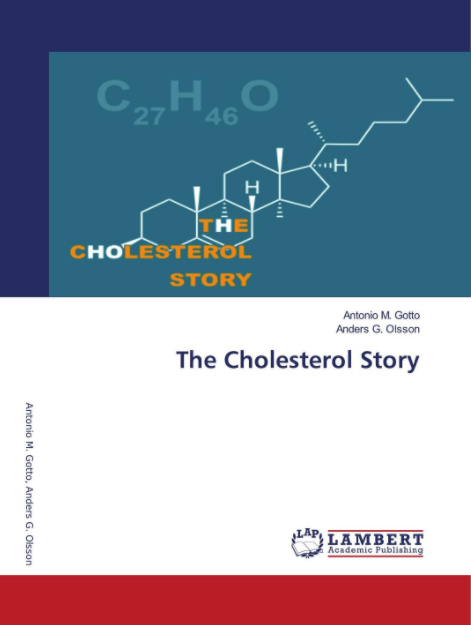Interview with
Dr. Anders G . Olsson
Co-Author of the book “The Cholesterol Story”
Published on 2021-06-17
Publishing House: LAP LAMBERT Academic Publishing
The Interview
1. First of all, we wish to thank you for taking your time for this interview. What encouraged you to author this revealing publication „The Cholesterol Story“ ?
Firstly, a general need to fill a knowledge gap in the public of the role of cholesterol as an essential component in living organisms and its role in causing atherosclerotic disease. Secondly, telling the “success story” of the ability to diminish this disease by influencing the cholesterol content in blood. Thirdly, the joy and satisfaction of putting this knowledge together.
2. Tell us more about you. Where are you from and why you decided to publish a book?
I am a Stockholmer. Except from the exciting and rewarding 23 years as Professor in Internal Medicine at the Linköping University, Sweden, we have been living in the Swedish capital. I and my family spend our summers at a spacious place in the Stockholm Archipelago, where I have full access to internet and WiFi resources. As a clinical cardiologist in Stockholm, Sweden, in the early 1970:ies I saw many patients dying from acute myocardial infarction in the coronary care unit without being able to prevent the atherosclerotic cardiovascular disease (ASCVD ) causing the infarction. During the following decades the scientific lipidology community has developed efficient blood lipid affecting therapies and thereby enabled physicians and cardiologist to start preventive therapy against ASCVD. Being a member of this community I felt it of value to publish this book.
3. What authors do you like to read? What book or books have had a strong influence on you or your writing?
I read both specialist literature within lipidology/cardiovascular disease and classical and contemporary fiction literature by European and American authors, e.g. Lev Tolstoy: Anna Karenina, John Steinbeck: The grapes of Wrath, Henning Mankell: Italian Shoes. As a board member of the Swedish Society of Medical History, I would also like to mention another book by Nils Uddenberg: Suffering and Healing, etc.
4. It is part of our business concept to actively look for new authors. What was your first reaction when you received our proposal to publish your academic work with us?
As a matter of fact, the initiative for writing this book comes from Dr Gotto and myself.
5. What was your experience with our team like?
It has been a great pleasure to work with you in the authoring of this book.
6. Are you planning another book publication? And if so, on which topic and can you imagine cooperating with us in the future again?
At present no. But I am considering to write more specific on eg. The medical history of Drugs affecting lipid metabolism.
7. Any last thoughts for our readers?
I really look forward to seeing that the book is exposed at congresses and symposia attended by people interested in the area of AHA, ACC, EAS, ESC, IAS, NLA, European Lipoprotein Club etc.
The Cholesterol Story
The Cholesterol Story is a success story because it has helped diminish suffering and death for millions of people worldwide. Vast experimental studies have established the importance of cholesterol in causing the arterial disease atherosclerosis. Atherosclerosis is a disease of the vessel wall that can lead to clinical symptoms like acute myocardial infarction or stroke. The ability to reduce levels of cholesterol in the blood has revolutionized the prevention andtreatment of cardiovascular disease. The importance of cholesterol in the development of arterial atherosclerosis has long been called the cholesterol hypothesis. With the recent expansion of knowledge about the role of cholesterol in this process, the alternative term cholesterol principle has been proposed, or, more specifically, the LDL principleor apolipoprotein B principle.This book should appeal to investigators and clinicians in the field of lipidology and lipid metabolism including physicians and cardiologists, researchers, fellows, medical students, dieticians and exercise physiologists, among others who are interested in preventive cardiology.





